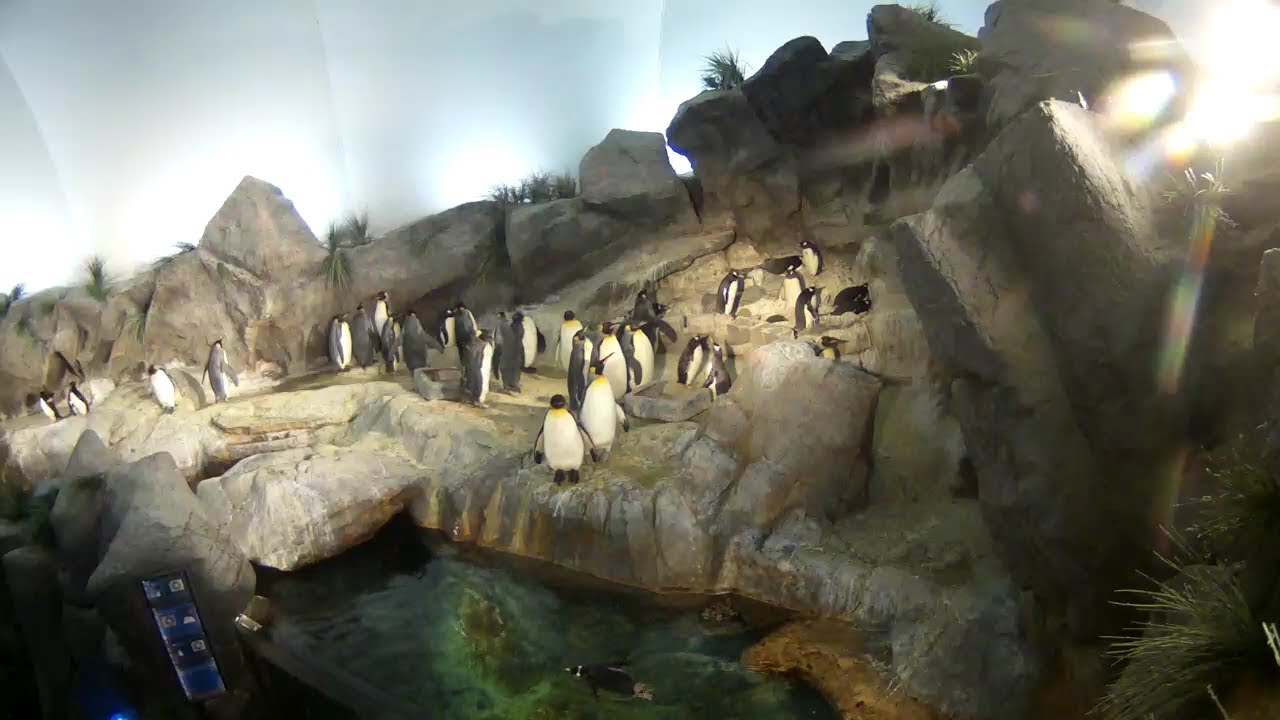– The educational value of the Penguin Webcam at Saint Louis Zoo in wildlife conservation and zoology education
– Detailed insights into penguin behavior and physiology as observed through the webcam
– The role of zoos in conservation efforts and public engagement
– Technical aspects and challenges of maintaining a live animal webcam
– Future directions in wildlife observation technology and conservation strategies
—
The Penguin Webcam at Saint Louis Zoo offers viewers around the globe a unique window into the daily lives, behaviors, and interactions of its captivating inhabitants. This digital observation tool entertains and serves as a vital educational resource, shedding light on the intricacies of penguin behavior, zoo management, and broader wildlife conservation efforts. Throughout this article, we aim to dissect various facets of the webcam’s contribution to zoology and environmental stewardship, the technicalities involved in its operation and the future landscape of such technological applications in conservation.
Understanding penguin behavior and physiology through direct observation has challenged researchers and enthusiasts. The Penguin Webcam at Saint Louis Zoo provides an unparalleled opportunity to study these birds in real-time, offering insights into their social structures, mating rituals, feeding behaviors, and caregiving practices. Penguins, known for their social nature, engage in various interactions critical to their survival and reproduction. Observing these behaviors through the webcam helps educate the public about the complexity of these animals’ lives, fostering a deeper appreciation and concern for their well-being in the wild.
Zooming in further, the physiology of penguins—a subject of much fascination among scientists and laypersons—can also be examined through the webcam lens. From their sleek, hydrodynamic bodies adapted for swimming to their insulating layers of fat and feathers crucial for surviving in cold environments, viewers can gain a tangible understanding of how these animals thrive in their natural habitats. This virtual window allows for a detailed study of penguin adaptations and health, contributing to broader zoological knowledge and research.
The role of zoos like the Saint Louis Zoo in conservation and public engagement is multifaceted. Beyond providing safe havens for endangered species, zoos are pivotal in educating the public about wildlife threats and the importance of conservation efforts. The Penguin Webcam bridges the public and the often distant and abstract concept of wildlife conservation, making it a potent tool for raising awareness and inspiring action. By bringing the plight and beauty of these creatures into homes and classrooms worldwide, the zoo amplifies its mission far beyond its physical boundaries.
Maintaining a live animal webcam involves significant technical and logistical considerations. The challenge lies in ensuring continuous, high-quality live footage broadcast without disturbing the animals. This requires carefully balancing camera placement, minimizing human interaction, and employing non-intrusive monitoring technologies. Furthermore, the technical infrastructure must be resilient to withstand the environmental conditions of the penguin habitat while providing seamless access to viewers worldwide. This behind-the-scenes effort is critical in delivering a captivating and educational viewing experience.
Looking ahead, wildlife observation technology like the Penguin Webcam at Saint Louis Zoo represents a growing field with immense potential for conservation and education. Innovations in camera technology, artificial intelligence, and data analytics open new avenues for monitoring wildlife health, behaviors, and populations. These advancements could revolutionize not only how we consume zoological content but also how we protect and preserve biodiversity. As technology evolves, so will the strategies employed by zoos and conservation organizations to engage the public and advocate for the protection of endangered species.
Essentially, the Penguin Webcam at Saint Louis Zoo embodies the convergence of education, technology, and conservation. By offering real-time glimpses into the lives of these fascinating creatures, the webcam educates and inspires a global audience, fostering a deeper connection with nature and encouraging conservation action. As we continue to leverage technology in wildlife observation and protection, initiatives like the Penguin Webcam will undoubtedly play a pivotal role in shaping the future of zoology and environmental stewardship.
*****
Source Description
You can now watch penguins on our live YouTube webcam! Tune in throughout the day to see zookeepers feeding the animals and cleaning habitats, birds swimming and diving, resting, preening, building nests and sometimes even raising their young at Penguin & Puffin Coast.
Technical Details
Live viewing (one-minute delay) is available during Zoo hours of 9 a.m. to 5 p.m. daily.
After 5 p.m., previously recorded footage will play.
At this time, our cameras are not recording sound.
Lighting
You may notice differences in brightness on the camera throughout the day. The lighting we provide for the birds in Penguin & Puffin Coast is reflective of the seasons of their native habitat. When it’s winter in the Northern Hemisphere where the puffins live, it’s summer for the penguins in the Southern Hemisphere. The light cycle provides the birds with the proper day/night cycle needed for breeding.


